What Is Insulin Resistance?
 There’s a lot of talk about the dangers of insulin resistance and the prevalence of it across the nation, even in Florida. Insulin resistance is the precursor to type 2 diabetes. In fact, about a third of Americans have insulin resistance and that percentage rises to half when you consider the group that are 60 or older. It’s considered a precursor for type2 diabetes and boosts the risk of having prediabetes, diabetes and other serious health conditions, including stroke, cancer and heart attacks.
There’s a lot of talk about the dangers of insulin resistance and the prevalence of it across the nation, even in Florida. Insulin resistance is the precursor to type 2 diabetes. In fact, about a third of Americans have insulin resistance and that percentage rises to half when you consider the group that are 60 or older. It’s considered a precursor for type2 diabetes and boosts the risk of having prediabetes, diabetes and other serious health conditions, including stroke, cancer and heart attacks.
Insulin resistance starts at a cellular level.
Each cell in your body needs glucose to function. It’s the energy source. The body has a perfect mechanism for ensuring the cells get it. It sends out insulin that signals the cells to “grab” the sugar/glucose from the bloodstream and put it into the cells. When insulin resistance occurs, the cells ignore those signals, leaving the sugar levels high in the blood. That makes the body create more insulin, because glucose levels are still high. It causes the beta cells in the pancreas to overwork and can’t keep up with the pace. Overtime, that leads to diseases like type 2 diabetes and fatty liver disease.
What are the signs of insulin resistance?
There are many signs of insulin resistance, but one of the easiest to identify is a large waistline. Waist circumference of 35 inches for women and 40 inches for men is a signal that you need further evaluation and probably have insulin resistance. For people of Southeast Asian descent, Chinese or Japanese heritage, the measurements of 31.5 inches for women and 35.5 inches for men is indicative that there’s a problem. If you have three or more of the following signs: high triglyceride levels, low HDLs, high blood pressure, height blood sugar or high fasting blood sugar levels, it also can mean you have insulin resistance.
How can you reverse the problem?
There are some factors you can’t control, such as genetics, ethnicity and aging, you can make some lifestyle changes that will affect whether you’ll develop insulin sensitivity, which is the precursor of insulin resistance. If you’re overweight, lose weight. Eating healthier and exercising will help that. In fact, lack of exercise also is a factor for developing insulin resistance, so you’ll be tackling two problems at once. Smokers tend to have insulin resistance more than non-smokers, too.
- You might not expect it, but lack of sleep can lead to insulin resistance. In a nation that values burning the candle at both ends at work, it’s time to make a change and get approximately 7-9 hours of sleep a night.
- One study at the University of New Mexico School of Medicine proved the most effective way to lower the risk is through BOTH diet and exercise for weight loss. It improved insulin sensitivity by 80%, compared to the 38% who lost weight through diet alone.
- Consider what you drink. A large study followed people that drank diet soft drinks compared to those who didn’t and found that those who consumed the most diet sodas had the biggest waist circumference. Stick with water.
- You’ll be ready to hit the sack when you realize that missing sleep for just one night equals eating high fat food for six-months! The study that showed this was presented at an Obesity Society meeting in 2015.
For more information, contact us today at Craig Long Fitness

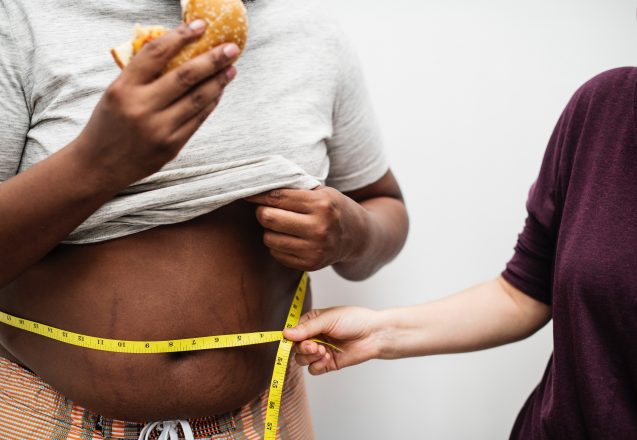

 Whether you have hypoglycemia—low blood sugar—or hyperglycemia—diabetes, you can expect mood swings. With diabetes, the mood swings can occur because of the stress from the disease and the anxiety and depression it can cause. While a lot of focus is on managing the physical problems caused by diabetes, it’s also just as important to pay attention to the mental stress it causes.
Whether you have hypoglycemia—low blood sugar—or hyperglycemia—diabetes, you can expect mood swings. With diabetes, the mood swings can occur because of the stress from the disease and the anxiety and depression it can cause. While a lot of focus is on managing the physical problems caused by diabetes, it’s also just as important to pay attention to the mental stress it causes.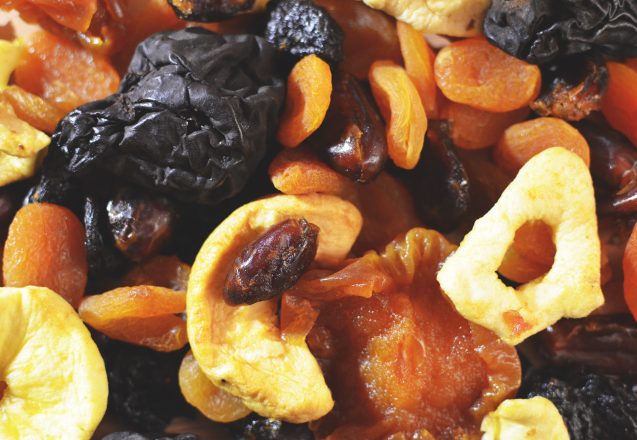
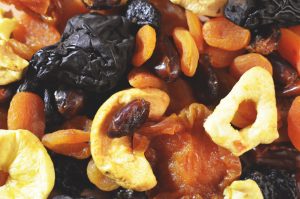 If you’ve looked for ways to extend the freshness of food when you stock up because the price is low or have grown it in your own garden, there are several methods to use, canning, freezing and dehydration are the favorite options. Do you get the same amount of nutrition from eating all these types of food, compared to fresh? In most cases, canned and frozen are just as nutritious, particularly if you grow them and can or freeze them immediately. How about dehydrated fruits and vegetables?
If you’ve looked for ways to extend the freshness of food when you stock up because the price is low or have grown it in your own garden, there are several methods to use, canning, freezing and dehydration are the favorite options. Do you get the same amount of nutrition from eating all these types of food, compared to fresh? In most cases, canned and frozen are just as nutritious, particularly if you grow them and can or freeze them immediately. How about dehydrated fruits and vegetables?
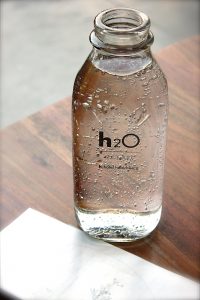 There’s been a lot of talk and questions about protein water recently. The first question is always, “Is there really such a thing as protein water?” The answer is, “Yes, Virginia, there is a thing called protein water.” It does start with water and does contain protein. The process of making protein water starts with whey protein isolate that’s taken from cow’s milk and adding it to water. It can also use other types of protein that are either animal-based proteins or plant-based, which offer more variety to suit special dietary needs.
There’s been a lot of talk and questions about protein water recently. The first question is always, “Is there really such a thing as protein water?” The answer is, “Yes, Virginia, there is a thing called protein water.” It does start with water and does contain protein. The process of making protein water starts with whey protein isolate that’s taken from cow’s milk and adding it to water. It can also use other types of protein that are either animal-based proteins or plant-based, which offer more variety to suit special dietary needs.
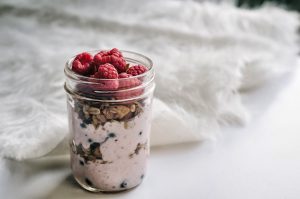 If you find yourself rushing around in the morning, barely able to make coffee, let alone breakfast, it’s time to try overnight oats. What are they? It’s regular oatmeal with a twist. You don’t cook it. Simply pour quick cook, steel cut or rolled oats into a container and soak them overnight with coconut milk, regular milk, Greek yogurt or almond milk. In the morning, you’ll have a breakfast ready meal because they absorbed the liquid and softened, like they would if you cooked them.
If you find yourself rushing around in the morning, barely able to make coffee, let alone breakfast, it’s time to try overnight oats. What are they? It’s regular oatmeal with a twist. You don’t cook it. Simply pour quick cook, steel cut or rolled oats into a container and soak them overnight with coconut milk, regular milk, Greek yogurt or almond milk. In the morning, you’ll have a breakfast ready meal because they absorbed the liquid and softened, like they would if you cooked them.
 In Florida, there’s a lot of fresh produce and it’s always a bit of a concern on how to measure fruits and veggies. While peas may be quite easy, measuring things like broccoli are not nearly as easy if you’re using a cup. The good news is that if you measure incorrectly and put too much broccoli on your plate, it won’t affect your weight loss program much and will boost your healthy eating. However, for people creating healthy recipes, it can make a difference in flavor.
In Florida, there’s a lot of fresh produce and it’s always a bit of a concern on how to measure fruits and veggies. While peas may be quite easy, measuring things like broccoli are not nearly as easy if you’re using a cup. The good news is that if you measure incorrectly and put too much broccoli on your plate, it won’t affect your weight loss program much and will boost your healthy eating. However, for people creating healthy recipes, it can make a difference in flavor.
 It might be intimidating to start strength training. Some women worry that it will give them bulging muscles. Learning the right way to do strength exercises is important, not only for maximum benefits, but also for safety. That why I create the easiest to follow techniques for clients both here in Florida and those online. Strength training plays an important role in fitness goals, no matter what they are. I also like to assure women that they won’t get bulging muscles, just toned ones. Due to hormone differences in women, it would take a special program and lots of extra work to see the muscle growth of women in body building.
It might be intimidating to start strength training. Some women worry that it will give them bulging muscles. Learning the right way to do strength exercises is important, not only for maximum benefits, but also for safety. That why I create the easiest to follow techniques for clients both here in Florida and those online. Strength training plays an important role in fitness goals, no matter what they are. I also like to assure women that they won’t get bulging muscles, just toned ones. Due to hormone differences in women, it would take a special program and lots of extra work to see the muscle growth of women in body building.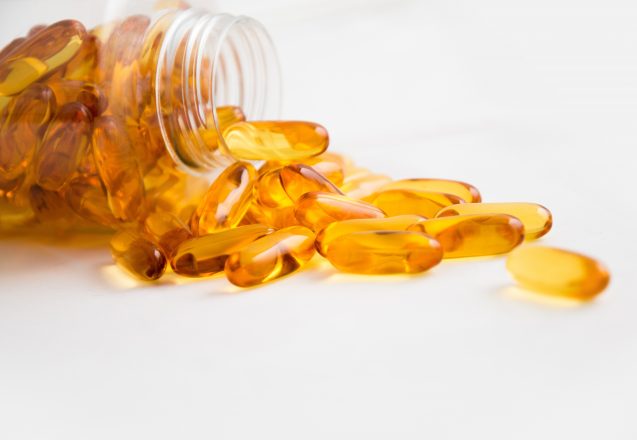
 Most people know that lack of iron can lead to iron deficiency anemia, but they don’t realize that even a small deficiency, which doesn’t qualify as anemia, can affect their workout. Iron is necessary to transport oxygen, via the blood, to all tissues in the body. Iron is in hemoglobin and is what makes blood look red. There’s a lot of things that affect how much iron you have in your body. For instance, age can cause you to absorb less. Digestive problems, particularly issues like Crohn’s disease, blood loss, improper eating habits and heavy menstruation cycles can also lead to iron deficiency.
Most people know that lack of iron can lead to iron deficiency anemia, but they don’t realize that even a small deficiency, which doesn’t qualify as anemia, can affect their workout. Iron is necessary to transport oxygen, via the blood, to all tissues in the body. Iron is in hemoglobin and is what makes blood look red. There’s a lot of things that affect how much iron you have in your body. For instance, age can cause you to absorb less. Digestive problems, particularly issues like Crohn’s disease, blood loss, improper eating habits and heavy menstruation cycles can also lead to iron deficiency.
 What is intermittent fasting? Intermittent fasting can be several things. It can be skipping food for a day or two or rearranging your eating schedule to prolonged going without food. It’s not a new concept. Fasting has been part of religious ceremonies for centuries and was used therapeutically since the fifth century in Greece. Intermittent fasting has been popularized recently as a method of weight loss and for health, but when you consider how early man ate, probably started in caveman times. When food was available, they ate. When it wasn’t, they went without.
What is intermittent fasting? Intermittent fasting can be several things. It can be skipping food for a day or two or rearranging your eating schedule to prolonged going without food. It’s not a new concept. Fasting has been part of religious ceremonies for centuries and was used therapeutically since the fifth century in Greece. Intermittent fasting has been popularized recently as a method of weight loss and for health, but when you consider how early man ate, probably started in caveman times. When food was available, they ate. When it wasn’t, they went without.
 Whether you’re a man or women, live in Florida or somewhere else, strength training is important. While you might consider it just for body builders or weight lifters, it provides more benefits than just building biceps or bulging muscles elsewhere. In fact, most women, unless they’re training excessively hard to build them, won’t get big muscles, but tone muscles instead. It all has to do with body chemistry. Even men must workout specifically to get that look, but they build muscle tissue faster.
Whether you’re a man or women, live in Florida or somewhere else, strength training is important. While you might consider it just for body builders or weight lifters, it provides more benefits than just building biceps or bulging muscles elsewhere. In fact, most women, unless they’re training excessively hard to build them, won’t get big muscles, but tone muscles instead. It all has to do with body chemistry. Even men must workout specifically to get that look, but they build muscle tissue faster.